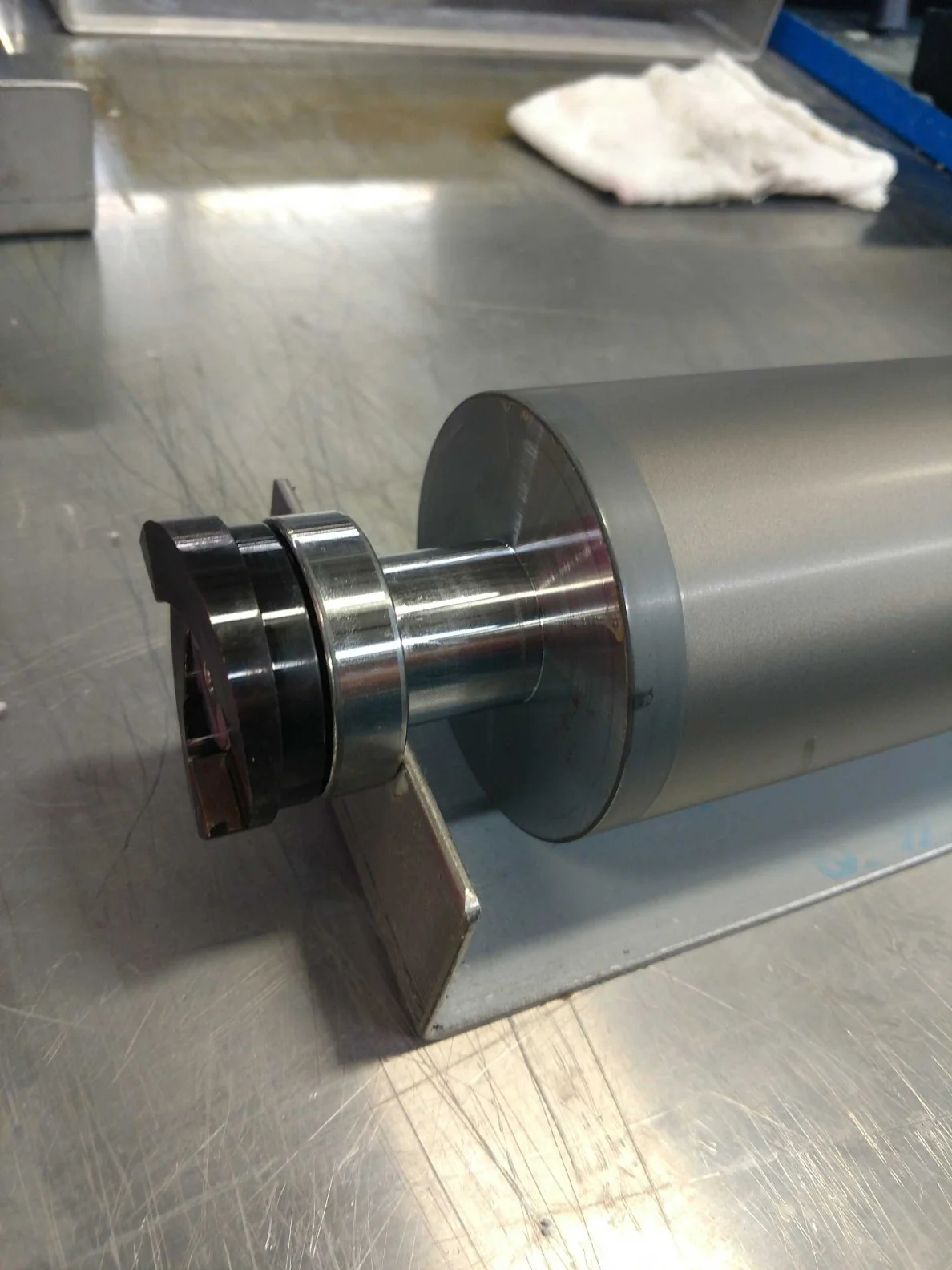Anilox the Heart of the press or the Achilles heal for Flexo?
The anilox in its simplest form is device used to collect a given amount of ink or coating and transfer it consistently to the surface of the modern photopolymer printing plate.
Sounds simple and it really is or as many might say it is not rocket science!
Considering the vital role that the anilox plays in everyday flexo printing it is still not understood by many operators due to lack of training and education within print shops worldwide.
From its humble beginnings as a crude two roll blank ink metering device designed to transfer the early aniline dyes to the equally crude nail and felt raised images the anilox has gone through a number of transformations.
This included the mechanical engraved chrome plated anilox. While this was a dramatic improvement from the blank two roll metering system the chrome plating of the engraved cells proved was prone to wearing out relatively quickly and was very easily damaged by any metal particles or hardened ink.
This was made even worse when the first trailing blade was invented to shear any excess ink that was carried on the cell wall structure due to surface tension. The problem was if any of the metal or ink particles got trapped between the blade and the roll then they would be dragged around the roll and cause even more damage to the anilox.
Unfortunately due to ink pressure building up underneath the trailing blade the faster it went the more it would be lifted away from the surface of the roll undermining its job of shearing the excess ink from the cells.
Mother being the necessity of invention this led to the development of the reverse angle blade which is used on the majority of modern presses and instead of being lifted from the roll surface as it goes faster is pushed down even harder.
Great news for maintaining a more consistent volume transfer but worse news for the chromed anilox which simply wore out faster due to the friction and the entrapment of any contamination within the ink
Initially this led to other coatings being applied to the mechanical engraving including ceramics.
Whilst these coatings did give the engraving more durability they were found to also be abrasive in themselves and often coated the mechanical cell walls unevenly resulting in inconsistent cell geometries which in turn led to inconsistent ink volume being transferred . Worse still they also led to premature and uneven blade wear.
Tests were made with early lasers to randomly engrave cells into a polished ceramic surface and when more advanced computer controls were added to the lasers the modern consistently engraved ceramic anilox was born.
The ceramic, usually chromium oxide ( Cr2O3) is thermally sprayed onto the surface of the anilox core before being ground with a diamond impregnated grinding wheel and polished to a mirror finish with diamond polishing belts.
Today almost any line count, volume and angles are offered. Initially 30 degree engravings were the norm but then 60 degree engravings became more popular as it was found they reduced blade chatter and as a result transferred a more even coating. For heavier more viscous inks and coatings 45 degree tri-helical engravings can even be produced just like traditional mechanical engravings.
Further developments with YAG lasers as opposed to the early Co2 lasers has enabled a wide range of stretched and channeled cells to be offered for better ink and coating release particularly where high line counts are concerned or heavy coatings are needed.
Generally speaking cell counts (LPI) lines of cells per inch have increased as screen counts on printing plates have increased from the 60 to 80 cells per linear inch to line counts as high as 300 LPI. Historically line counts of 4 or 5 times that of the plate screen count but today anilox screen counts can be even higher.
That said most printers that want to achieve commercially acceptable quality graphics generally use 133-175 LPI on their printing plates although screen shapes and frequencies have been and continue to be hybridized.
These higher line counts have enabled flexographers to offer print quality equal to or better in some instances than traditional letterpress and gravure, certainly at a more affordable cost.
While cell counts are critical the cell depth (BCM) billion cubic microns) and hence volume is just as important if not more so.
A cubic micron (um3) is a unit of volume and one billion cubic microns (1 000 000 000 um3) is equal to 0.001 cm3.
In Europe the volume of the cell is calculated as cubic centimeters per square meter cm3/m2. So as 1 square meter equals 1555 square inches 1 BCM/in2 = 1.55cm3/m2.
At the end of the day if you fail to transfer sufficient ink or coating to the printing plate surface and hence to the substrate then you will fail to achieve the color strength, or coat weight required for what you are trying to print.
The quote I often use is that Line count is Vanity and Volume is Sanity!
In other words, knowing your cell volume and maintaining it throughout a print run is mission critical but this is where many printers fail and hence instead of its strength it has become the Achilles heel for many!
The irony is that the answer is very simple – clean your anilox!
When challenged as to why their anilox are not being cleaned the usual answers are :
- I don’t have time .
- I’m not allowed the time to clean my anilox
- I don’t have access to or have any cleaning products
- I didn’t realize my anilox was dirty.
Now while these answers may seem understandable to many the fact is your anilox are the heart of your press and unless they are maintained at optimum volume carrying capacity at all times then don’t be surprised when you look at your bottom line and find you are not making the profits that you expected too.

